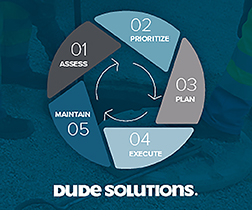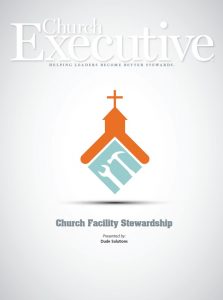
By Donovan Loomis
Being intentional in managing your facilities has very little impact on how effectively the church can carry out the mission, right? Wrong.
While the church’s primary mission is spreading the gospel, we have to take care of our most expensive assets if we want to have the resources, long term, to help fulfill the church’s mission. Although the physical building is not “the church,” it is the launching pad for everything we do.
When I ask church leaders how they plan for their facility maintenance, it surprises me how often they nervously chuckle and tell me they just “fly by the seat of their pants.” Many point out that they don’t have the staff or budget to do much more than “put out fires.” Or, they have so much deferred maintenance that they can’t get out from behind the eight-ball.
Churches don’t find themselves in a pit of deferred maintenance overnight
Often, it’s the result of an action (or lack thereof) referred to as the normalization of deviance — defined as “the gradual process through which unacceptable practices or standards become acceptable. As the deviant behavior is repeated — without catastrophic results — it becomes the social norm for the organization.” Ultimately, this is what caused the Challenger Space Shuttle explosion and the BP oil spill.
While these are two extreme examples, the normalization of deviance can occur in any profession. There is rarely an immediate effect when we let things slide; therefore, a church might continue to cut more and more, without seeing noticeable results.
Even if your facilities are new, you’re not off the hook. In fact, this is the perfect time to begin this process. Relying on the board to make all the decisions eight years down the road, with minimal historical information, is dangerous. From my experience, undocumented maintenance is the most expensive form of maintenance.
I don’t doubt that good intentions are behind this behavior. Maybe giving is down, or the church needs to cut spending somewhere and, by default, it comes from the facilities. I’ve heard facility managers say, “I’m supposed to cut costs by ‘X’ percent this year” — but where does this number come from? Was there any strategic planning behind it? Do we know how much we can afford to cut without harming us in the long run? Do we have data to back up our case?
At our firm, we’ve coined a process we call APPEM to help ensure you remain diligent and make sound decisions when cutting (or investing in) your facilities:
 #1: Assess — The first step is to look at everything you own, the condition it’s in, and the remaining useful life. Sometimes a Facility Condition Assessment is necessary to help get the full story. The cycle normally breaks down here when you get the data but never put it to use. This is why Computerized Maintenance Management Systems (CMMS) solutions are popular, as they can put this data to use and help you manage it.
#1: Assess — The first step is to look at everything you own, the condition it’s in, and the remaining useful life. Sometimes a Facility Condition Assessment is necessary to help get the full story. The cycle normally breaks down here when you get the data but never put it to use. This is why Computerized Maintenance Management Systems (CMMS) solutions are popular, as they can put this data to use and help you manage it.
After all, “you can’t manage what you don’t measure.”
#2: Prioritize — Next, prioritize what repairs are critical and what can wait based on the long-term effect and limited resources you might have.
#3: Plan — Planning helps you decide what you’re going to do and how you need to align our resources to make it happen.

#4: Execute — At this stage, it’s all about going out and doing the work to execute on the plan. Failure to execute here is often the result of not effectively communicating your story with data to back it up.
#5: Maintain — The last step isn’t so much about ending as it is an ongoing cycle. Maintaining ensures that you stay on top of preventive maintenance and corrective work orders. It’s critically important to track labor and costs associated with this work.
You’re NOT finished here!
Where we often see the breakdown here is the communication between the leadership team and the operations team, or the ones doing the work. To help bridge this communication gap and ensure your capital plan reflects the current state of your equipment, you should have a system in place that will constantly be reassessing the information you receive as a result of this process and provide insight behind these numbers to help you make informative decisions.
We shouldn’t be passive in our faith, and we shouldn’t be passive in how we manage the physical assets entrusted to us, when so much depends on how effectively we manage them.
Donovan Loomis has more than three years of experience in church facility management and serves as Dude Solutions’ Industry Specialist focusing on religious organizations. He graduated with a BS degree in 2012 from East Carolina University.


